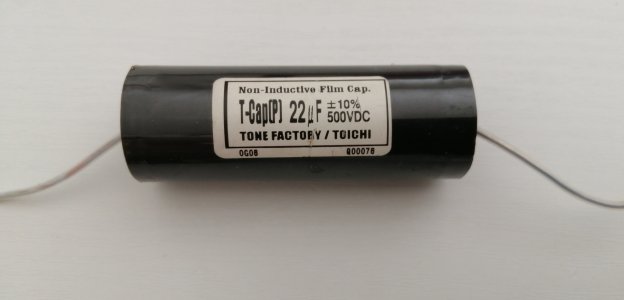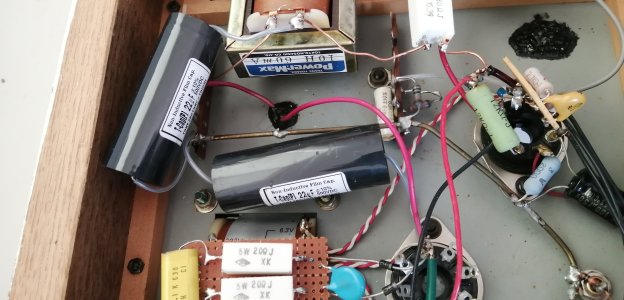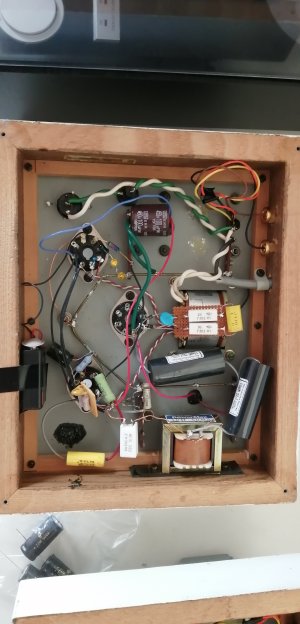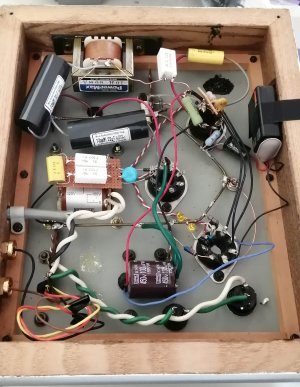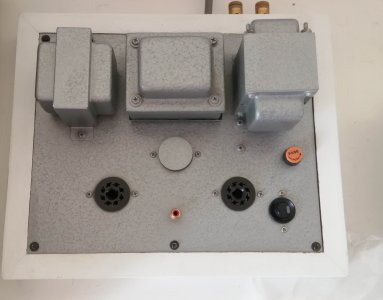Hi all,
I need to replace the filter caps in my S.E.X monoblocks (one of the earliest kits in use with the foreplay 2).
I sourced some 22uf 500V filter caps to match the ones in there and noticed that the existing are film caps with no polarity marked on. The ones I have bought are electrolytic at the same value (except their tolerance is -10/+30% while the films are +/-10%). Can I use the electrolytic as a replacement? I'm concerned about the polarity as well, as I don't want to blow the caps up. I've attached a photo of the inside wiring and existing cap.
Any advice would be much appreciated. (I'm no techie and didn't build these myself)
Best,
Simon
I need to replace the filter caps in my S.E.X monoblocks (one of the earliest kits in use with the foreplay 2).
I sourced some 22uf 500V filter caps to match the ones in there and noticed that the existing are film caps with no polarity marked on. The ones I have bought are electrolytic at the same value (except their tolerance is -10/+30% while the films are +/-10%). Can I use the electrolytic as a replacement? I'm concerned about the polarity as well, as I don't want to blow the caps up. I've attached a photo of the inside wiring and existing cap.
Any advice would be much appreciated. (I'm no techie and didn't build these myself)
Best,
Simon

